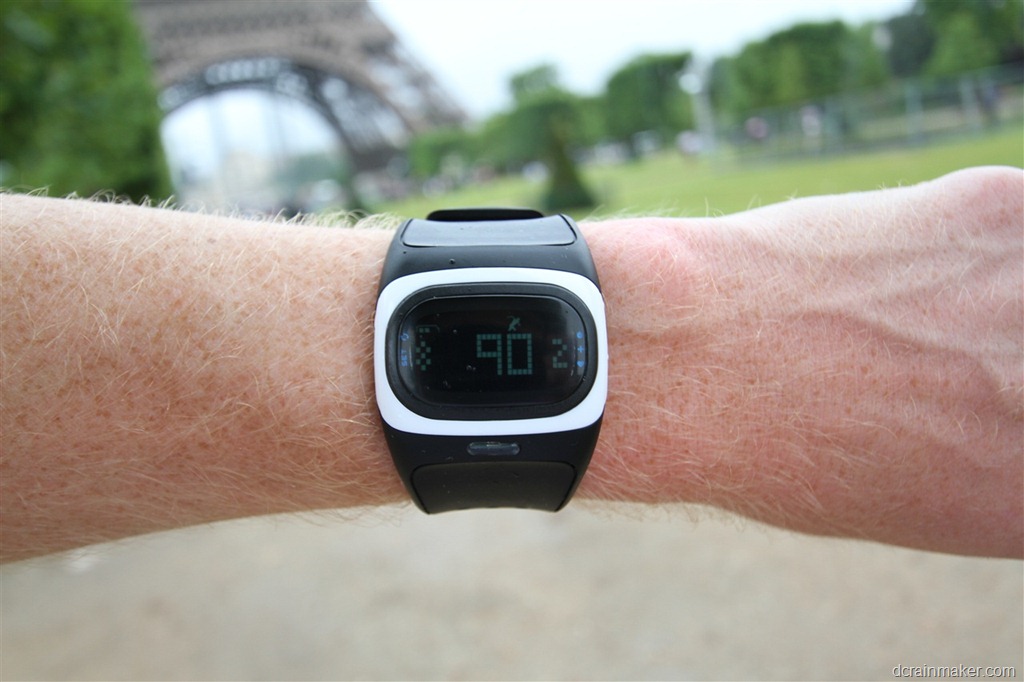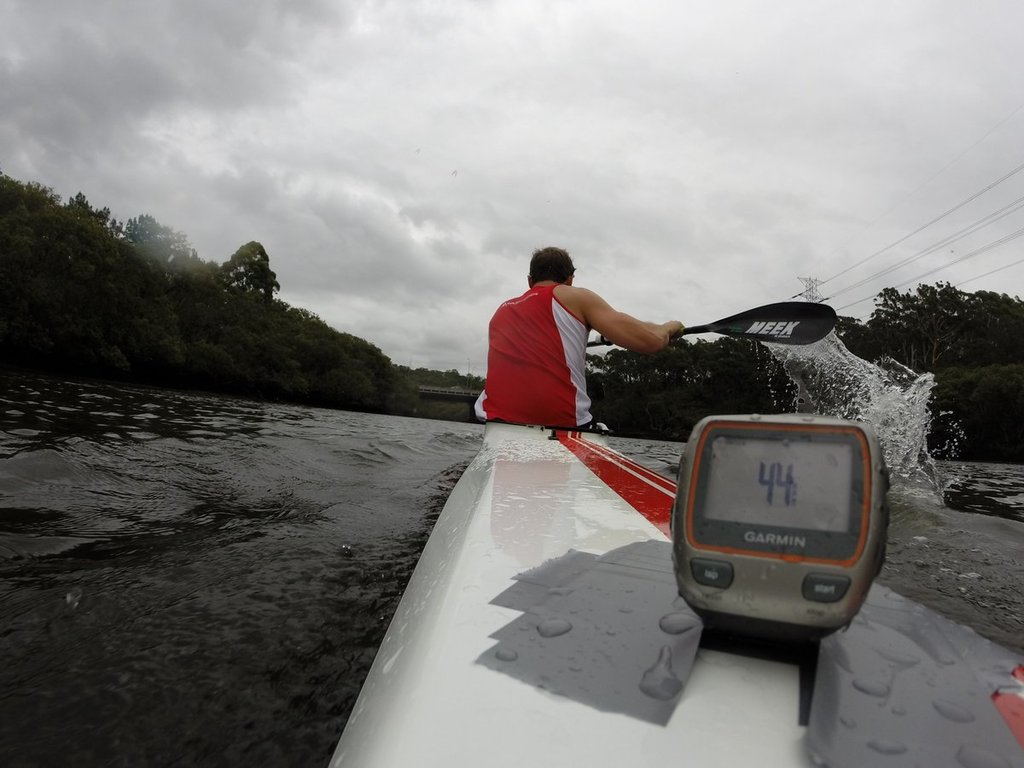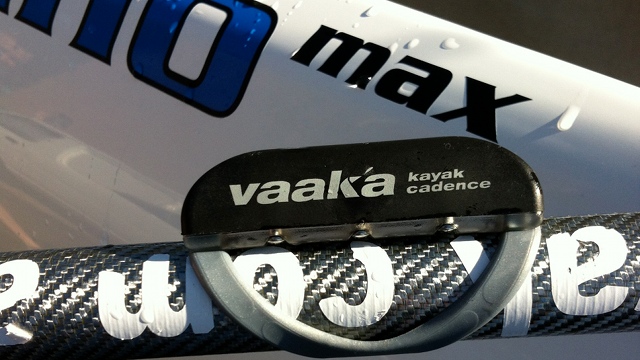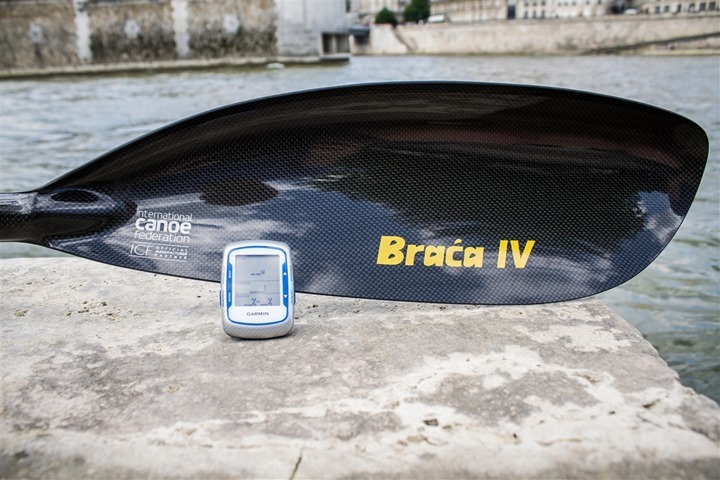Performance Measurement Technology - Which Device Will Help You Paddle Faster?
Triona Pottinger | One Giant Leap - The recent influx of performance measurement technology over the last decade is fantastic news for paddlers - knowledge is power as they say, and the more you know about how you’re performing, the more you can do to improve your results.
However sometimes it can be hard to know which device is the right one to invest in. All paddlers have different needs and goals, so choosing a device comes down to identifying which things are most important to you when it comes to your sport.
In this guide we’ve covered the pro’s and con’s of the four main performance measurement devices available to paddlers - Heart Rate Monitors, GPS Speed and Distance Monitors, Cadence Sensors and Power Meters. If you’re looking to improve your performance on the water but need some help picking and choosing between the different technologies, then this guide is for you.

Heart Rate Monitor
Heart rate monitors have been in use for decades now, and they were really one of the first devices that the everyday athlete could use to measure their performance. They are still popular today and because they have been in use for so long, there are numerous scientific studies available which relate heart rate to intensity and training zone setting. This device certainly has its place in a well balanced training regime.
Heart rate monitoring is a very effective method of gauging training intensities, however it does have a few limitations which require careful management. The main point to keep in mind is that a heart rate monitor doesn’t give you a direct measurement of intensity - it measures your body’s response to intensity. This is a key distinction to make.
| Advantages | Disadvantages |
| Plentiful information explaining how to use heart rate to create an effective training schedule (for endurance athletes in particular) | Provides inconsistent data - heart rate is affected by numerous factors other than your body’s training effort e.g. lack of sleep, caffeine, stress, temperature, adrenalin |
| Can assist with setting training levels and ensuring you’re not overtraining | Heart rate decreases as you get fitter so you constantly need to reset training levels |
| Good stepping stone to performance feedback (using data to support your training) | Ineffective measurement of intensity due to lag time e.g. you sprint but your heart rate doesn’t register the increased effort until 30 seconds later |

Photo: www.washrider.com
GPS Speed and Distance Monitor
Speed and Distance Monitors are a useful addition to any paddler’s training regime. They are helpful in determining pacing and race planning in particular, and the fact that GPS speed data integrates with many tracking apps means it is a great way to log your training history. Keeping a record of training is important for making sure you are meeting your training requirements.
The caveat of a GPS Speed and Distance Monitor is that while the information it provides can be very useful, there is the fact that speed is easily affected by environmental conditions (such as wind and water current). This means that it can be difficult to separate out your actual effort from the external factors affecting your boat.
| Advantages | Disadvantages |
| Speed/distance and time information can be displayed in a variety of convenient formats to match your particular paddlesport discipline e.g. time/1000m (sprint kayakers) | The effect of environmental conditions on speed can be significant e.g. wind, water current. This makes it difficult to understand whether increased/decreased speed is due to your performance, or from external factors affecting your boat. |
| Keeping track of pace/speed is useful for maintaining training quality or when pacing during a race | |
| Simple post analysis - a wide variety of apps available which take recorded speed data and process it quickly into a format for easy analysis | |
| Great for tracking training volumes (distance travelled and durations) | |
| Can be used as a gauge of intensity - training intensities can be set by pace, but only if environmental conditions are managed (which is difficult to achieve) | |
| Effective way of fitness tracking e.g. tracking 5km time trial times over the course of a season will give an indication of how your fitness is developing - again though, environmental conditions need to be kept in check when doing these ‘benchmark tests’ | |

Cadence Sensor
In days gone by the only way to measure your cadence was to start a stopwatch and count the number of strokes performed over a given distance. Technology has since evolved to give us a more efficient means of measuring stroke-rate.
As with the previous two devices covered here, it is important to remember that cadence is just one part of the training picture. For example if your aim is to develop a more efficient stroke through use of a cadence sensor (by keeping stroke-rate steady but trying to increase speed), then you need to ensure that your speed is being accurately tracked as well. Likewise this device will be at its most useful if factors such as environmental conditions and equipment are managed.
| Advantages | Disadvantages |
| Can be used to help the development of a powerful stroke – sessions where keeping cadence steady but trying to increase speed. Relies on accurate speed feedback to be implemented effectively | Stroke-rate is affected by environmental conditions e.g. wind, water current. These factors can increase or decrease stroke rate whilst the athlete maintains a consistent intensity (making it difficult to understand whether differences in stroke-rate performance are due to effort, or to external factors) |
| Targeting a particular cadence during training allows the athlete to adapt to the cadences experienced/required when racing (stroke-rate conditioning). Using a cadence sensor can let you know if you are meeting these targets | Cadence sensor data is influenced by equipment – e.g. switching to a larger blade will require more effort to sustain the same stroke-rate. In other words, you will need to re-evaluate your cadence targets when changing your equipment |
| Replaces the need for a coach with a stopwatch | Unlike a power meter, the data from a cadence sensor can’t be used to compare individual and group (team-boat) sessions, because stroke-rate is not necessarily indicative of effort/intensity |
| Can be used to gauge paddling intensity, however this relies on the paddler using consistent equipment and paddling in consistent conditions (difficult to achieve) | |

Power Meter
Commonly referred to in cycling as the ‘Holy Grail of performance measurement’, training with power is now a reality for paddlers as well. Power meter technology has been used by National Canoe Sprint Federations for years, and since becoming available commercially in 2013 more and more individual paddlers are turning to power meters to train.
Training with power overcomes the weaknesses of the other performance measurement devices. Power meters measure the power-output, force and stroke-rate of a paddler, and they are the only device which will provide you with a direct measurement of the exact thing that governs performance - energy output. Because power is unaffected by external factors such as environmental conditions, you are able to track and compare your performances knowing that the data you’re viewing is due to effort alone. This gives you incredibly powerful information which (among other benefits) will allow you to find your optimal stroke-rate, develop your most efficient technique, set training levels and monitor your fitness development.
| Advantages | Disadvantages |
| Measurement of pulling hand force, pushing hand force, power and stroke-rate (cadence) in a single device | A power meter comes as a shaft (with a stiffness of your choosing) to which you attach your own set of blades i.e. it can’t be applied to your existing shaft |
| The only monitoring device that can analyse an individual stroke in-depth with high speed data (sampling at 60 times a second). This allows for technique analysis, left/right stroke profile comparisons, team boat athlete comparisons, and identification of weaknesses or imbalances in stroke | A power meter shaft can be used with different sets of blades, however it requires the process of removing/attaching blades with hot glue which takes some time and effort |
| Enables you to develop a more efficient technique - one that allows you to maintain your target/race speed whilst minimising power output | |
| Helps you find your optimal stroke-rate - the cadence which allows you to sustain the highest average power output over a specific distance or time | |
| You can track your fitness levels, free from the effects of lag-time and environmental conditions | |
| Allows you to control and monitor training intensities by measuring real-time intensity, without lag | |
| Power meters are not affected by changes in equipment e.g. you do not need to re-evaluate power targets if you switch your blades | |
| Provides precise stroke-by-stroke timing analysis - useful for synchronisation in team boats | |
With performance measurement devices becoming increasingly more mainstream, the future of paddling is filled with possibilities. Athletes are hungry for any information that is going to give them an edge on the water, and these devices enable that - ultimately giving you, the paddler, more control over your results.
Now the only question is - which device is best for you?





